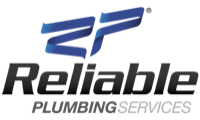The tempering of hot water was introduced to the heated water services installation standard to ensure the safety of consumers and the community, and reduce risks, such as skin burns, to users. As the cooler months approach it is vital practitioners ensure hot water standards are met.
Without the use of set temperature controls, personal hygiene fixtures such as showers and basins have the potential to expose users to extreme water temperatures. This risk can be easily eliminated by the use of an appropriately marked temperature control device, such as a tempering valve, thermostatic mixing valve or a water heater complying with Australian standard 3498-2009 authorisation requirements for plumbing products – Water heaters and hot water storage tanks.
When is a temperature control valve required?
A requirement of Australian / New Zealand standard 3500.4:2003 Plumbing and Drainage Part 4: Heated water services, is that all new heated water installations deliver heated water not exceeding;
(a) 45°C at the outlet of sanitary fixtures used primarily for personal hygiene purposes for the aged, the sick, children or people with disabilities in healthcare and aged care buildings, early childhood centres, primary and secondary schools and nursing homes or similar facilities for the aged, the sick, children or people with disabilities; and
(b) 50°C at the outlet of sanitary fixtures used primarily for personal hygiene purposes for all other situations.
Note: Personal hygiene fixtures are showers, basins, etc. not including sinks and laundry troughs.
To help clarify the meaning of a heated water installation, the Plumbing Industry Commission (PIC) has provided a definition in the context of clause 1.9.2 of as/NZs 3500.4:2003. This can be found in the Victorian Variations of the Plumbing Code of Australia and reads:
a ‘heated water installation’ means either a heated water reticulation heater (hot water service) and a heated water reticulation system (pipework, associated valves and fixtures) or a heated water reticulation system (pipework, associated valves and fixtures).
Where tempering of hot water is not mandated, practitioners should inform consumers of the safety benefits of installing temperature control devices when replacing an existing heated water unit.
What are acceptable solutions for the control of hot water delivery temperatures?
AS/NZs 3500.4:2003 prescribes acceptable methods to ensure the heated water does not exceed the set temperature. Where the heated water is not permitted to exceed 45°C, the installation will comply if all sanitary fixtures used primarily for personal hygiene purposes
are supplied from a thermostatic mixing valve adjusted to an
outlet temperature.
Where the heated water is not permitted to exceed 50°C, the installation will comply if all sanitary fixtures used primarily for personal hygiene purposes are supplied from:
– a thermostatic mixing valve adjusted to an outlet temperature not exceeding 50ºC at each outlet supplied from the thermostatic mixing valve;
– a tempering valve adjusted to an outlet temperature not exceeding 50ºC at each outlet supplied from the tempering valve; or
– a water heater complying with AS 3498 and marked with the following: “This appliance delivers water not exceeding 50ºC in accordance with AS 3498”
Hot water services with incorporated “temperature mixing devices” have been installed without the provisions of a temperature control device, resulting in a failed audit. This is not an acceptable solution, unless the unit is labeled appropriately and in accordance with the manufacturer’s installation instructions.








